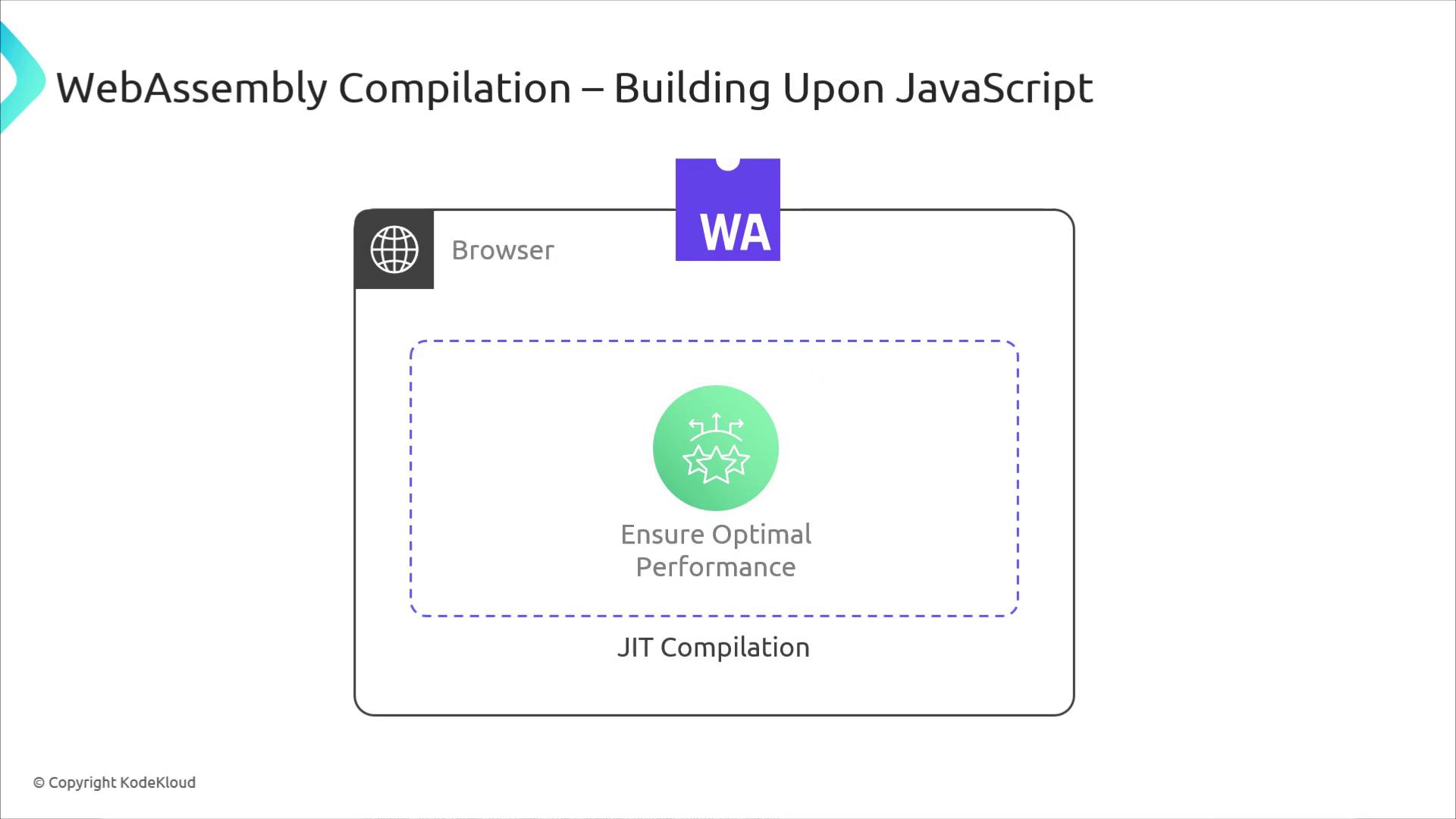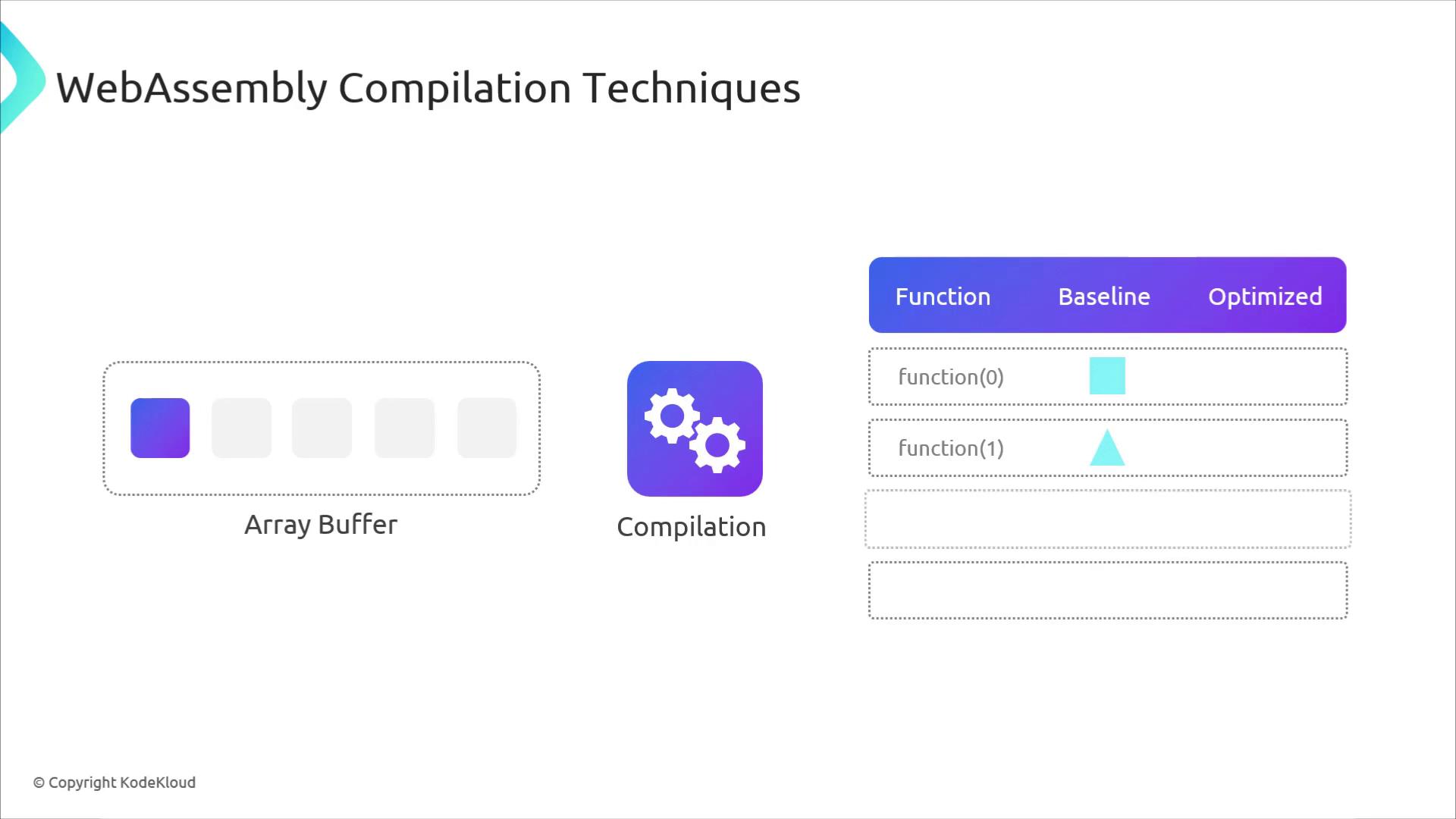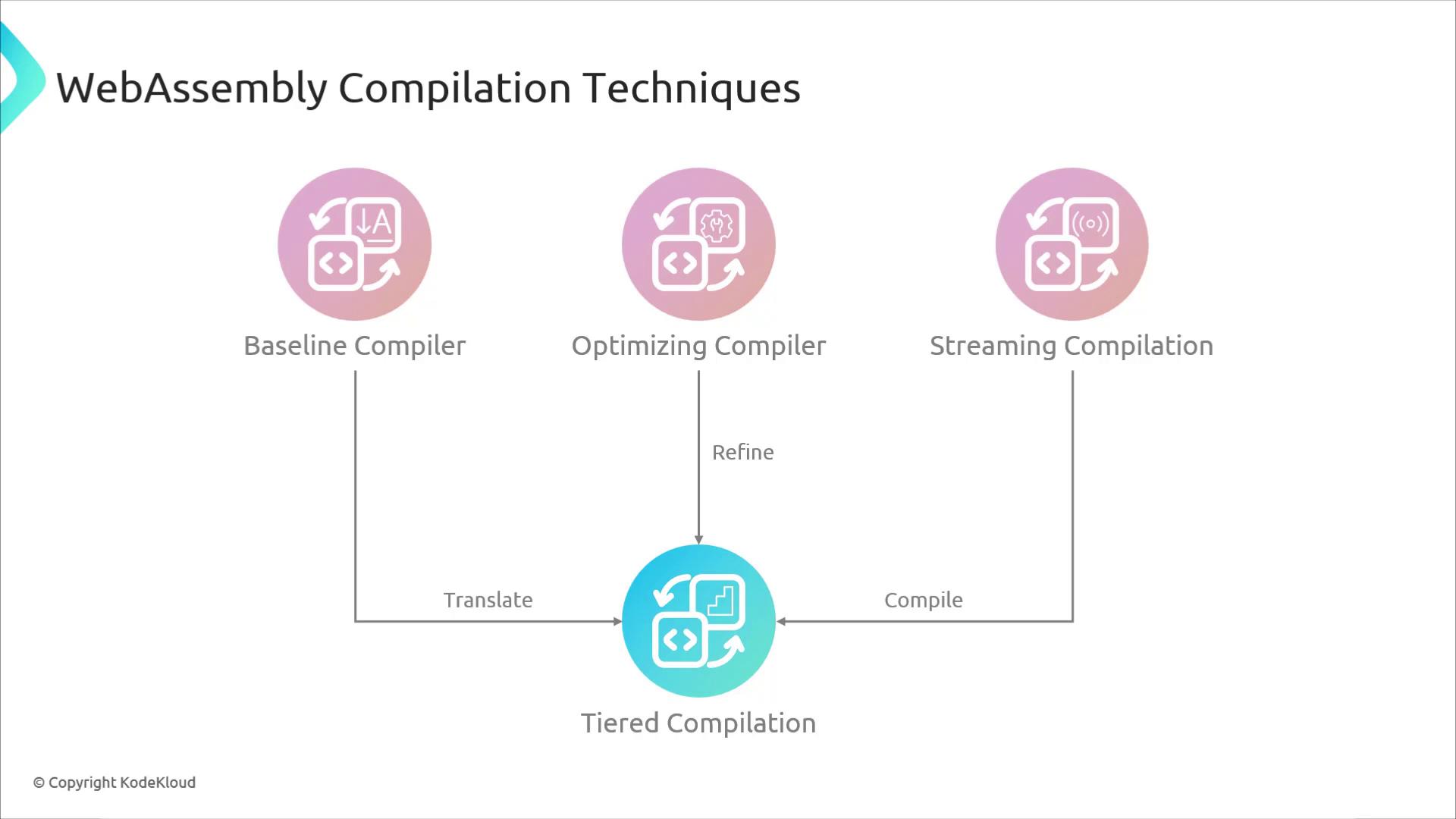Exploring WebAssembly (WASM)
Compiling to WebAssembly
Introduction to compiling to WASM
In this lesson, we’ll compare how JavaScript and WebAssembly handle compilation in the browser. We start by revisiting JavaScript’s just-in-time (JIT) approach and then explore WebAssembly’s ahead-of-time (AOT) plus JIT workflow.
JavaScript Compilation in the Browser
Originally, JavaScript was interpreted line by line. Modern engines have evolved to use JIT compilation for better performance:
- Browser parses the JS source code.
- An Abstract Syntax Tree (AST) is generated.
- Code is translated into machine instructions either immediately (interpretation) or just before execution (JIT).
- Optimized machine code is cached for faster subsequent runs.

WebAssembly Compilation Overview
WebAssembly adds an AOT phase before the browser sees your code:
- High-level languages (Rust, C, C++) compile to the WASM binary format offline.
- The binary contains compact, low-level instructions that are quick to parse.
- Upon loading, the browser’s JIT further translates WASM into optimized, device-specific machine code.

Key WebAssembly Compilation Techniques
Building on JavaScript’s foundation, WebAssembly employs multiple tiers of compilation:
Baseline Compiler
Quickly translates WASM binaries into a basic form of machine code, ensuring the application starts running with minimal delay.Optimizing Compiler
Runs alongside the baseline compiler to identify hotspots and refine machine code, improving performance for long-running tasks.Streaming Compilation
Begins converting chunks of the WASM binary as they arrive over the network, so most of the code is ready by the time the download finishes.
Note
Streaming compilation can significantly reduce startup latency, especially for large modules.


- Tiered Compilation
Combines baseline and optimizing compilers: code starts on the baseline path and “tiers up” to the optimized version once it’s ready, all while streaming compilation continues to feed new segments.
Warning
Tiered compilation may increase memory usage as multiple compiler tiers run in parallel.

Comparison of WASM Compilation Techniques
| Technique | Purpose | Benefit |
|---|---|---|
| Baseline Compiler | Fast initial machine code gen | Quick startup |
| Optimizing Compiler | Refine code for performance | Enhanced long-term execution |
| Streaming Compilation | Compile during download | Reduced load time |
| Tiered Compilation | Combine baseline & optimized | Balanced startup latency & peak performance |
In our next lesson, we’ll explore popular WASM compilers—examining their features, trade-offs, and how they fit into the broader WebAssembly ecosystem.
Links and References
Watch Video
Watch video content